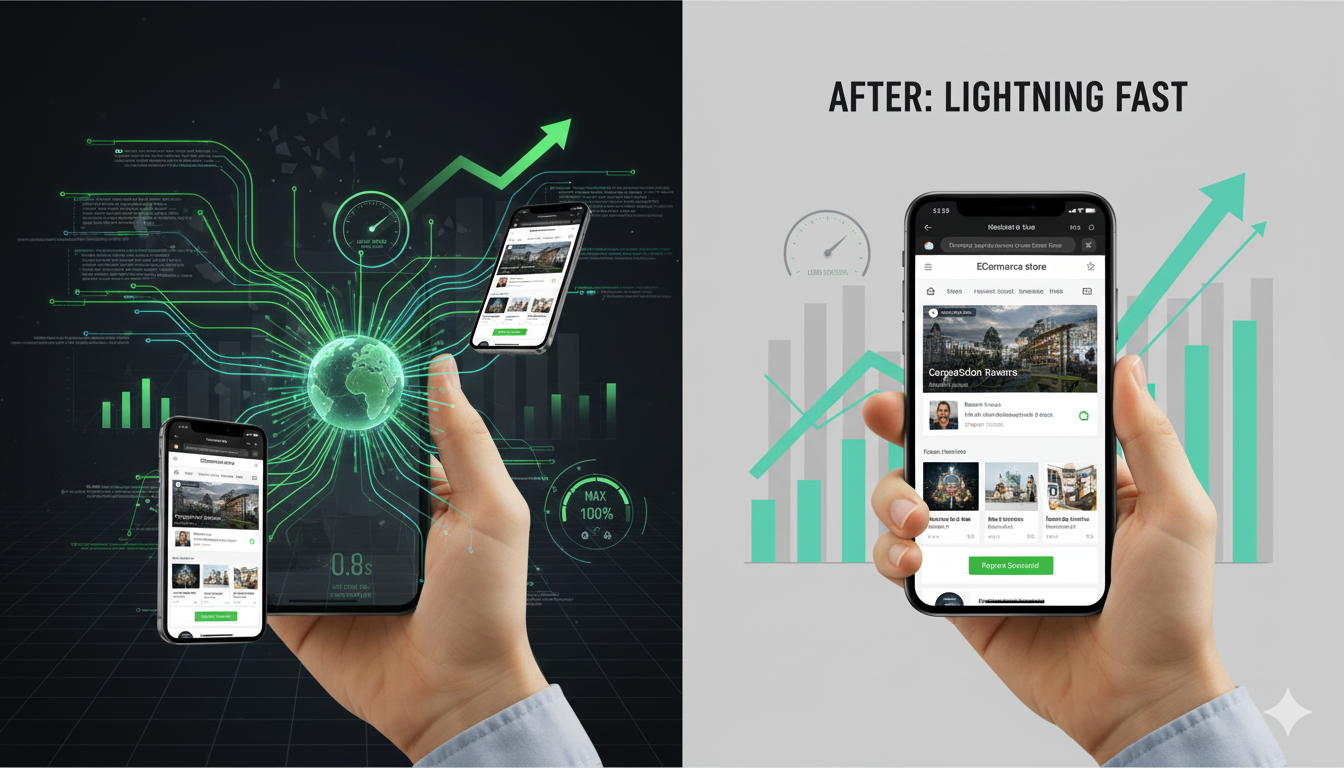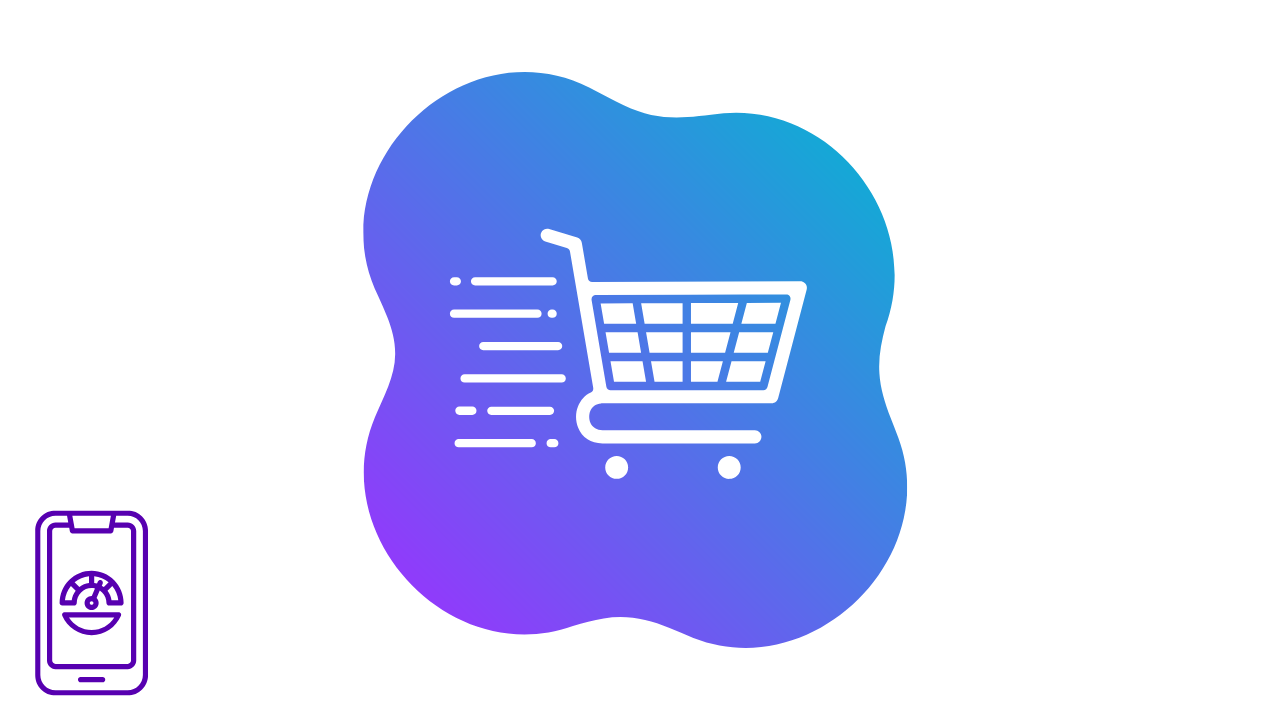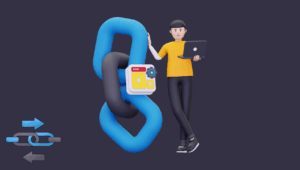In the fast-moving world of online retail, speed and usability have become the ultimate sales drivers. While many eCommerce stores pour resources into ads, influencer campaigns, or discounts, the truth is simpler: customers often abandon carts because the shopping experience feels slow, confusing, or frustrating. In this article, we’ll explore how fast checkout and mobile optimization drive higher ecommerce conversions.
In 2026, fast checkout and mobile optimization are no longer optional ,they are critical to staying competitive. Every second of delay costs sales, and every unnecessary step in the checkout process risks losing a customer.
Businesses that invest in streamlining their sites making them faster, cleaner, and more mobile-friendly consistently outperform competitors in conversion rate, customer satisfaction, and repeat business.
1. Why eCommerce Conversions Depend on Mobile Experience

More than 70% of eCommerce traffic now comes from mobile devices, and that number continues to grow each year. The mobile experience is no longer secondary , it is the shopping experience for most customers.
Your website’s first impression , layout, speed, clarity, and ease of navigation, determines whether a visitor becomes a buyer or bounces away.
According to a 2025 Google UX study, a one-second delay in mobile load time can drop conversions by up to 20%. That means if your store takes 5 seconds to load, you could lose more than half your potential customers before they even see your products.
Fast, responsive mobile design builds trust and reduces friction, especially during key sales events like flash sales, holiday discounts, or limited-time offers.
Pro Tip: Fast Checkout and Mobile Optimization Drive Higher eCommerce Conversions
Choose a mobile-first WordPress theme, compress and optimize your product images, and use script-minimizing tools to improve your Core Web Vitals, a major factor in both SEO and user experience.
2. Simplifying the Checkout Experience

A complicated checkout process is one of the biggest conversion killers in eCommerce. Shoppers today expect a smooth, frictionless flow, one that feels effortless from cart to confirmation.
According to the Baymard Institute, nearly 17% of online shoppers abandon their carts because the checkout process is too long or complicated. Each unnecessary step is an obstacle between your brand and your customer’s wallet.
Here’s how to simplify your checkout UX:
- Minimize form fields: Only ask for essentials , name, email, and payment details. Every extra question adds friction.
- Offer guest checkout: Don’t force users to create an account before buying; let them check out instantly and invite them to register afterward.
- Enable auto-fill: Allow browsers and mobile devices to fill out shipping and billing details automatically.
- Provide express payments: Integrate PayPal, Apple Pay, Google Pay, or Stripe for one-tap checkout experiences.
- Be transparent with costs: Unexpected fees or unclear shipping details can cause last-second drop-offs.
For WordPress users, platforms make it easy to optimize checkout flows by fixing plugin conflicts, improving speed, and securing payment gateways , all of which directly improve user trust and conversion rates.
3. Mobile Optimization: Beyond Just Responsiveness

Many site owners believe “mobile optimization” simply means resizing layouts , but in 2025, it’s much more than that. True mobile optimization is about performance tuning and experience design.
Every element of your site, from code weight to loading sequence, impacts user behavior. Studies show that even a small delay in a button’s response time can make users feel that the site is “broken” or unreliable.
Key elements of advanced mobile optimization:
- Lightweight code: Remove unused scripts, minify CSS and JavaScript, and load assets asynchronously.
- Caching and CDN integration: Deliver static content faster by serving it from the nearest server to the user.
- Image optimization: Use modern formats like WebP and set adaptive sizes for different devices.
- Lazy loading: Delay off-screen image loading until needed.
- Core Web Vitals focus: Optimize for Largest Contentful Paint (LCP), Interaction to Next Paint (INP), and Cumulative Layout Shift (CLS).
Platforms specialize in diagnosing and resolving speed issues on WordPress-based eCommerce sites. They help:
- Optimize databases and scripts
- Fix Core Web Vitals and responsiveness issues
- Streamline WooCommerce checkout speed
When customers can browse, tap, and buy without lag or confusion, they spend more time , and more money . on your site.
4. Case Study: From Laggy to Lightning-Fast Storefront: Fast Checkout and Mobile Optimization Drive Higher eCommerce Conversions

Let’s look at a real-world example.
A mid-sized apparel brand running WooCommerce faced declining mobile conversions and rising bounce rates. Their average mobile load time was 6.1 seconds, and their conversion rate had dropped to just 1.8%.
After partnering with QuickFixWP, the site underwent a full optimization sprint:
- Heavy plugins were replaced with lightweight alternatives
- Scripts were deferred to improve first contentful paint
- Checkout process was simplified to a one-page design
The results were dramatic:
- Page load time improved from 6.1s → 1.9s
- Conversion rate jumped by 67%
- Average order value increased by 23%
Beyond performance metrics, the brand also saw a decrease in abandoned carts by 34% and a measurable improvement in customer satisfaction scores.
This case perfectly illustrates that in eCommerce, speed = trust, and trust = sales.
5. The Psychology of Speed and Convenience

Performance optimization isn’t just about code, it’s about human psychology. Online shoppers associate speed with professionalism and credibility. A fast website subconsciously signals that a brand is reliable and technologically advanced.
Conversely, a laggy checkout or slow product page creates uncertainty:
- “Will my payment go through?”
- “Is this site safe?”
- “Should I just order from Amazon instead?”
By delivering near-instant responsiveness, your store reassures buyers that everything is functioning smoothly , encouraging them to complete their purchase confidently.
Even small gestures like progress bars during checkout or instant payment confirmation messages can dramatically reduce cart abandonment.
6. Future of eCommerce Optimization: 2026 and Beyond Fast Checkout & Mobile Optimization Drive Higher eCommerce Conversions

The next phase of eCommerce evolution is already here. AI-driven personalization, one-click checkouts, and predictive payment technologies are transforming how people shop online.
By 2026, analysts predict that over 50% of online purchases will happen through mobile-first, AI-assisted experiences, where websites automatically adjust checkout options, shipping methods, and recommendations based on user behavior.
Here’s what the future looks like: Fast Checkout and Mobile Optimization Drive Higher eCommerce Conversions
- AI-powered checkout assistance, chatbots that guide users through payment.
- Voice commerce integration , letting customers purchase using Alexa or Google Assistant.
- Predictive payment options,pre-suggesting preferred payment methods based on past habits.
- Instant micro-caching, storing key pages on the user’s device for sub-second loads.
Whether you run a boutique store or a large WooCommerce setup, adopting these technologies early can give you a significant head start.
If your store struggles with lag or plugin conflicts, working with specialists ensures your site is ready for the next generation of online shopping.
7. Building Long-Term Customer Loyalty Through Performance

Fast websites don’t just convert better, they retain customers longer. A seamless experience builds satisfaction and loyalty, leading to repeat purchases and word-of-mouth referrals.
When customers know they can complete their purchase quickly and securely, they’re far more likely to return. And because Google prioritizes fast, mobile-friendly sites, performance improvements also bring organic traffic benefits through higher SEO rankings.
So performance optimization isn’t just a one-time project , it’s an ongoing growth strategy that pays off in both traffic and revenue.
Fast Checkout and Mobile Optimization Drive Higher eCommerce Conversions: Conclusion
The formula for modern eCommerce success is simple:
Fast + Mobile + Simple = Higher Conversions.
Mobile optimization and seamless checkout experiences are no longer backend concerns — they are your frontline sales tools.
Investing in speed, usability, and responsive design leads to:
- Better user satisfaction
- Stronger SEO visibility
- Higher conversions and lifetime customer value
If your online store suffers from slow load times, plugin errors, or high cart abandonment, it’s time to fix the foundation.
Partner with WordPress performance experts to make every second , and every click count.







